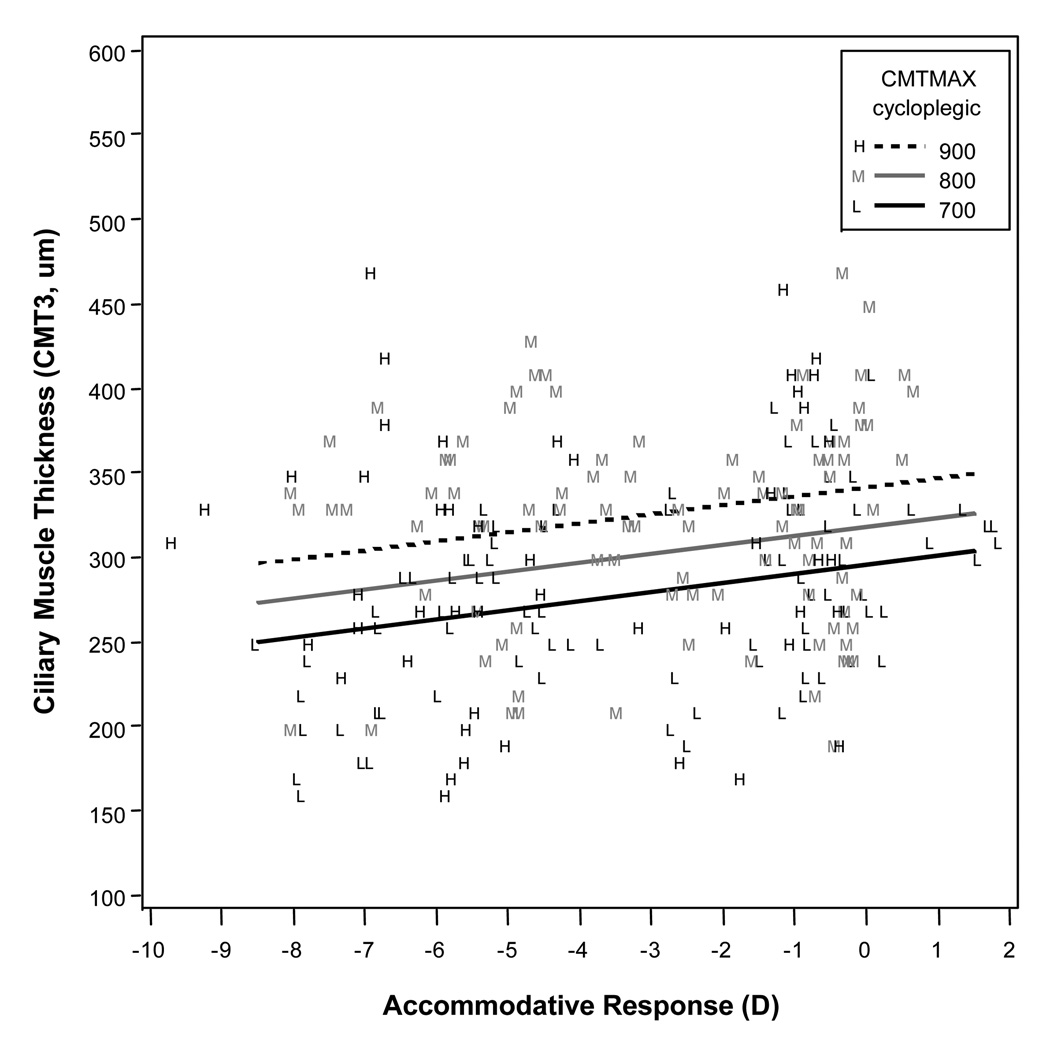Figure 4.
Modeled results for ciliary muscle thickness 3 mm posterior to the scleral spur (CMT3) for a range of accommodative responses, showing that higher levels of accommodative response (more negative values) were associated with a thinner measurement at CMT3. Cycloplegic maximum ciliary muscle thickness (CMTMAX) was a statistically significant variable in the model, so the three lines represent three different cycloplegic ciliary muscle thicknesses across the range of our sample.

